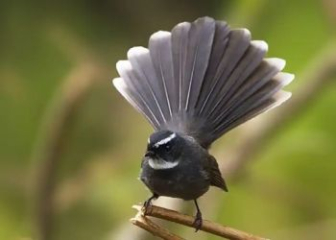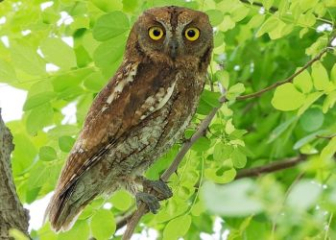Oriental White-eye – Best Techniques for Raising & Caring to Encourage Melodious Singing
Blog | by
The Oriental White-eye (Zosterops japonicus), a small and charming songbird, is well-loved in Vietnam for its clear, melodic, and cheerful chirping.
The Oriental White-eye (scientific name: Zosterops japonicus) is one of the most popular and beloved pet birds in Vietnam. It is adored for its sweet, crystal-clear, and melodic voice, as well as its small, cute appearance. This bird stands out with a signature "white eye-ring" and is known for its gentle nature, adaptability, and quick domestication.
If you're looking to learn more about the Oriental White-eye, follow the article below shared by nicebirds to confidently care for this delightful species!
Information about the white-eye bird :
|
Scientific name |
Zosterops japonicus |
|
Vietnamese name |
White-eye, Japanese White-eye |
|
Surname |
Zosteropidae - White-eyes |
|
Set |
Passeriformes - Sparrows |
|
Source |
Asia, Japan, China, Vietnam,... |
|
Size |
10 - 12 cm |
|
Weight |
9.75 - 12.75g |
Origin of the White-rumped Bird
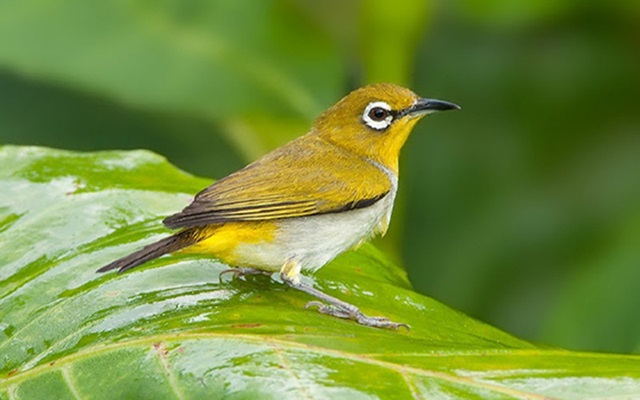
The white-eye is a bird native to Asia.
The white-eye (scientific name Zosterops japonicus), commonly known as the Japanese white-eye, is a bird native to Asia, first scientifically described in 1847 after an ornithological survey in Japan.
Currently, they are widely distributed throughout the Asia - Oceania region, mainly in the following countries:
- Southern China
- Japan
- Korea
- Vietnam
- Laos
- Cambodia
- Myanmar
In Vietnam, the White-rumped Robin has existed naturally for a long time in the North and Central regions, and often lives in fruit gardens, tea hills, and bamboo forests. And thanks to its clear, chirping voice, it has become one of the most popular pet birds.
However, due to their rapid reproduction rate and adaptability, white-eyes are considered an invasive species in some countries such as Hawaii, where they compete with native birds and alter the ecosystem.
The name “Zosterops” comes from Greek, where “Zoster” means “belt” and “ops” means “eye”, combined to form “ring around the eye”, used to describe the characteristic white ring around the eye of the White-eye bird.
Appearance of the White-rumped Bird

The cute appearance of a white-eye bird.
The white-eye is a small, graceful bird and is easily recognized by a white ring around its eyes. Let’s learn more about the appearance of this bird!
- Length : Average 10 - 12 cm
- Weight : 9.75 - 12.75g
- Head : Small, round.
- Eyes : Big, bright, black-brown in color and has a very clear white ring around the eyes, looks like wearing white glasses.
- Beak : Pointed, small, black or dark gray.
- Coat : Smooth, back is yellowish green, belly is white or pale yellow.
- Wings : Short, rounded, close to the body.
- Legs : Slim, short.
- Tail : Short, fan-shaped
- Distinguishing between male and female : Males are usually darker in color but are generally difficult to distinguish with the naked eye.
- Mutant colors : Yellow-ringed and white-ringed birds (White-ringed birds) are rare colors, highly valuable in the bird-playing world.
Ring-eye bird behavior
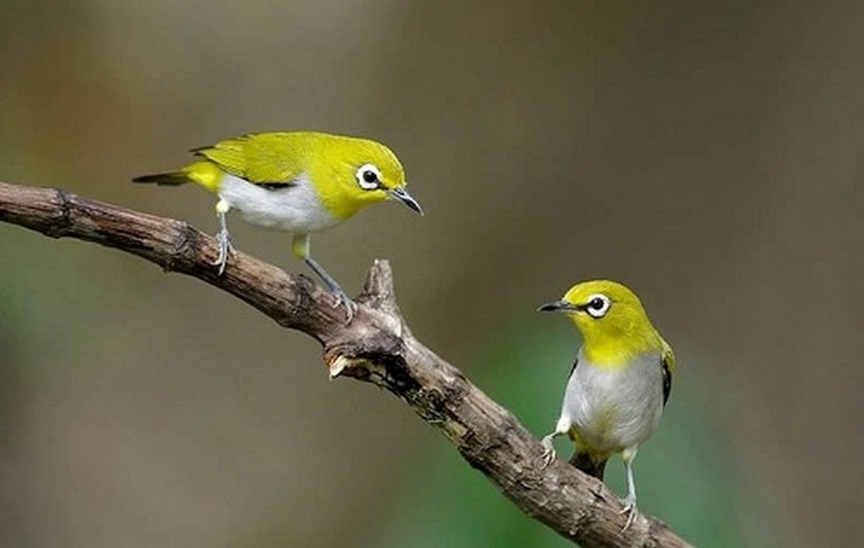
Two white-eyes are perched on a dry branch.
The white-eye is considered an intelligent, agile bird that likes to live in flocks and is highly territorial. Let's learn more about the typical habits of this bird to understand them better!
Like to live in a pack
In the wild, Japanese White-eyes love to live in flocks, usually 5-30 individuals. And when kept in captivity, they still love to see their own kind, but it is best to keep a distance to avoid conflicts.
Highly territorial and competitive
Although living in flocks, White-rumped Birds are highly territorial and competitive, especially males during the breeding season.
They can fight and chase each other to protect their territory. Therefore, when keeping many birds in the same cage, you need to have a large enough area to avoid the birds biting their beaks, chasing and fighting each other.
Singing and communication habits
The white-eye is a bird with a clear, melodious and rhythmic song, highly appreciated in the bird world. Usually, the male bird will have a better voice than the female bird.
These birds use small, twittering calls or sometimes long “cheep chirp” or “tuit tuit” calls to communicate with other birds. They can even “mimicking” some simple sounds if they hear them often.
Good adaptability
White-ringed birds have the ability to adapt very well to different living conditions, they can live in forests, in gardens or even in crowded residential and urban areas.
They also live peacefully with humans and can be trained well. However, this bird species is quite cold-resistant. In Japan, during winter, White-eyes "migrate" to warmer climates.
How to raise a singing bird in detail for beginners
Below is a super detailed guide on how to raise golden-throated birds for new bird owners, helping birds grow well, live long and sing well. Let's find out now to pick up your own secrets.
Choose good breed birds
To make it easier to raise birds, you should choose good quality Ring-necked Birds because only when the bird is of good quality can it quickly adapt to the captive environment.
Depending on your needs and economic conditions, you should choose the following bird species:
- Male bird : If you want the best singing bird
- Female bird : If you want to breed.
- Wild birds (newly trapped) : cheap, easy to find but need time to tame.
A good rooster will meet the following conditions:
- Large head, wide beak base, large eyes, clear white ring
- Long pointed tail
- The voice is clear, rhythmic, and resonant.
Prepare suitable cages and breeding environment
After choosing a good breeding bird, you need to prepare a suitable cage to help the White-ringed bird adapt quickly and develop best in captivity. When choosing a bird cage, you need to pay attention to the following factors:
- Cage type : Round or square cage, diameter about 35 cm, height about 40 cm.
- Cage material : Should choose wood, bamboo or stainless steel, depending on financial ability.
- Necessary equipment : 2 perches placed alternately, food and water troughs placed low, the bottom of the cage needs to be lined with newspaper or clean sand, and a cage cloak to cover when necessary.
- Cage location : The cage should be hung in a high, airy, cool place, avoiding strong winds or harsh light shining directly on the cage, avoiding smoke, dust, noise,...
What do white-throated birds eat?
Ring-eyes are omnivorous, they can eat both animals and plants, so when kept in cages you can feed them a variety of foods as follows:
- Main food: Specialized bran for white-eyes, eat 1 - 2 small teaspoons per day.
- Periodic supplementary food : Ripe bananas, papaya, apples, mealworms, ant eggs, baby foxes or boiled eggs, crushed eggshells.
- Drinking water : Add clean water every day, do not use chlorinated water.
- Foods to avoid : Onions, garlic, spicy foods, chocolate,...
Daily activities required
To help your Ring have a comfortable, happy spirit and the ability to prevent disease, you need to do the following activities regularly every day.
|
Work |
Time, frequency and notes |
|
Sunbathing for Rings |
Around 7am - 9am, bathe for 30 minutes every day |
|
Bath |
If it's sunny, give the Ring-shaped orchid a bath 2-3 times a week. |
|
Cage cleaning |
Every day, clean the cage, clean the bottom, remove leftover food... |
Taming wild birds (For newly trapped birds)
If you buy a domesticated bird, you can skip this step, but if you buy a wild bird, you need to tame it so that it can adapt and become more tame. Follow the instructions below!
Phase 1: Cage familiarization (About 1 week)
- Cover the cage completely, leaving only one side open.
- Hang the cage in a quiet place, do not scare or touch the cage too much, except during feeding and toileting times.
Phase 2: Getting to know people (2 - 3 weeks)
- Gradually open the cage cover to let the bird see the person.
- By the third week, you can let the bird sunbathe to get used to the surrounding environment.
Phase 3: Practice listening and singing
- Once the bird is used to it, every morning you should let the bird listen to the recorded calls of other birds so they can practice "communicating".
- When the bird can eat bran, sunbathe, and bathe in water every day, it is tame.
Common diseases in white-eye birds and how to treat them
Below are some common diseases of the Ring, let's learn more to know how to treat and handle when needed!
|
Disease name |
Token |
Treatments and procedures |
|
Diarrhea |
Loose, watery stools that are green, yellow, or milky white may contain additional foam |
Stop feeding birds fresh fruits and live bait. Feed only dry bran and clean water. Add digestive enzymes to the bran. If more severe, 1 drop of Bio Biseptol for children can be used continuously for 2 - 3 days. |
|
Bird ruffled feathers, frayed feathers |
Feathers are rough, frayed, and not shiny. Lazy bird singing, standing huddled, trembling |
Increase sunbathing time every day to 15 - 30 minutes Feed the bird with pureed boiled eggs. Add vitamin E + B complex to food or drink |
|
Cold, heat stroke |
Bird ruffled feathers, trembling Birds stop eating and sing lazily If more severe, death can occur within 1-2 days. |
Birds should be kept in a warm, sheltered place. Warm up with a light bulb Add garlic juice + vitamin C to drinking water |
Ring-necked pigeon price list
Currently, in the Vietnamese bird market, the price of the White-rumped Bird fluctuates a lot, depending on its origin, purity and singing voice. If you want to own a bird with this chirping sound, please refer to the following price list.
|
Ring type |
Reference price (VND/piece) |
Characteristic |
|
Forest Ring |
100,000 - 200,000 |
Newly trapped bird, not tamed |
|
Pure ring |
250,000 - 500,000 |
The baby bird is over 1 month old but knows how to eat bran and has started chirping. |
|
Ring sings well |
500,000 - 1,300,000 |
Birds chirp loudly and evenly. |
|
Dreamy eyes |
300,000 - 600,000 |
Eyes dimmer than green earrings |
|
Turmeric gold ring |
1,500,000 - 4,500,000 |
Rare, mutant color |
|
Albino |
Over 5,000,000 |
Very rare |
Note :
- The price of wild white-eyes is usually cheaper when the birds are in season, usually from September to December every year.
- Roof rings are always 30 - 50% cheaper than empty rings
- The lines with open eyes, red eyes, yellow and white rings belong to the gene mutation group so they are expensive and sought after by many people.
Questions and answers about the White-rumped Bird
Why is it called the White-rumped Bird?
White-eyes are so named because they have a white ring around their eyes that looks like a “ring”.
How long do white-eyes live?
Average 5 - 12 years, depending on care conditions.
What fruit do white-throated birds eat?
They can eat ripe fruits such as papaya, banana, sweet tangerine, apple,...
How many days does it take for a yellow-ringed bird to hatch?
White-eyes usually incubate their eggs for about 10 - 12 days, after which the eggs will hatch into chicks.
Beautiful Ring-Neck Bird Pictures
If you also love this small, chirping bird, then admire more beautiful and unique images of the White-ringed Bird that we have collected below!
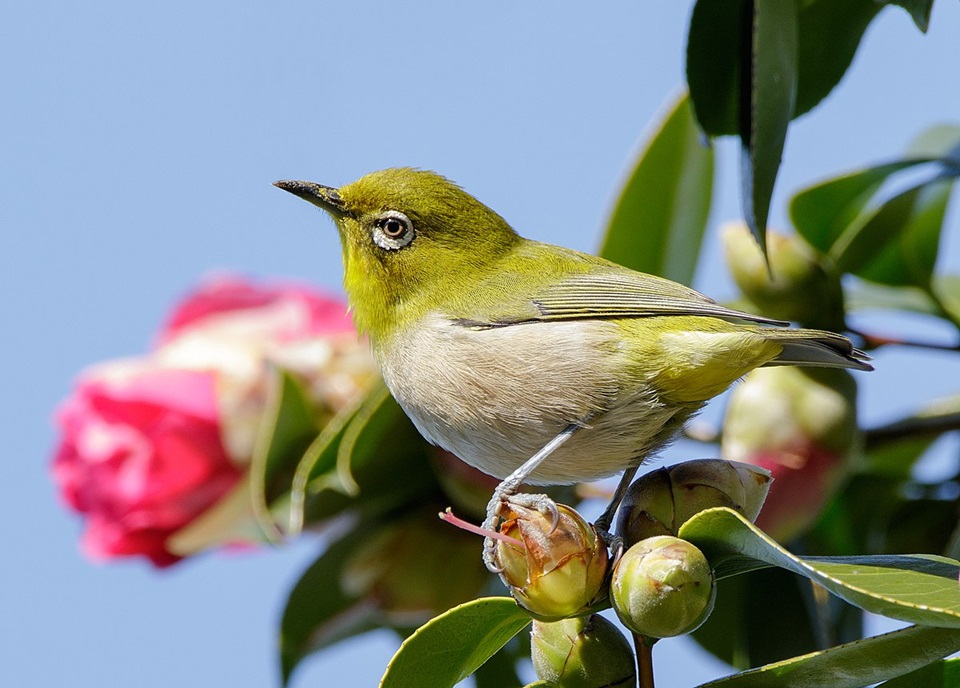
Image of a white-eye bird perched on a flower.

Image of mother and baby white-eye bird.
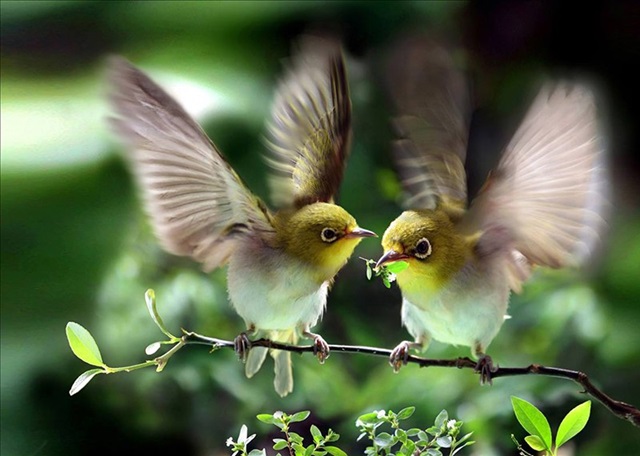
Two white-eyes are flapping their wings together.
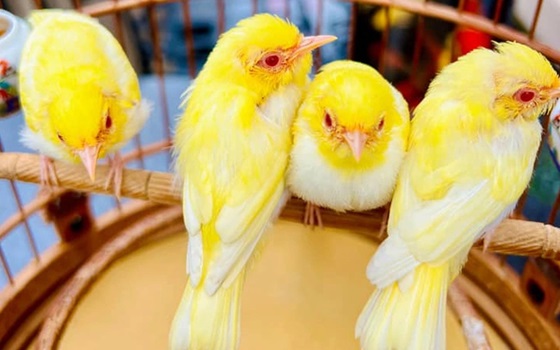
Image of mutant white-eye birds with unique bright-colored feathers.
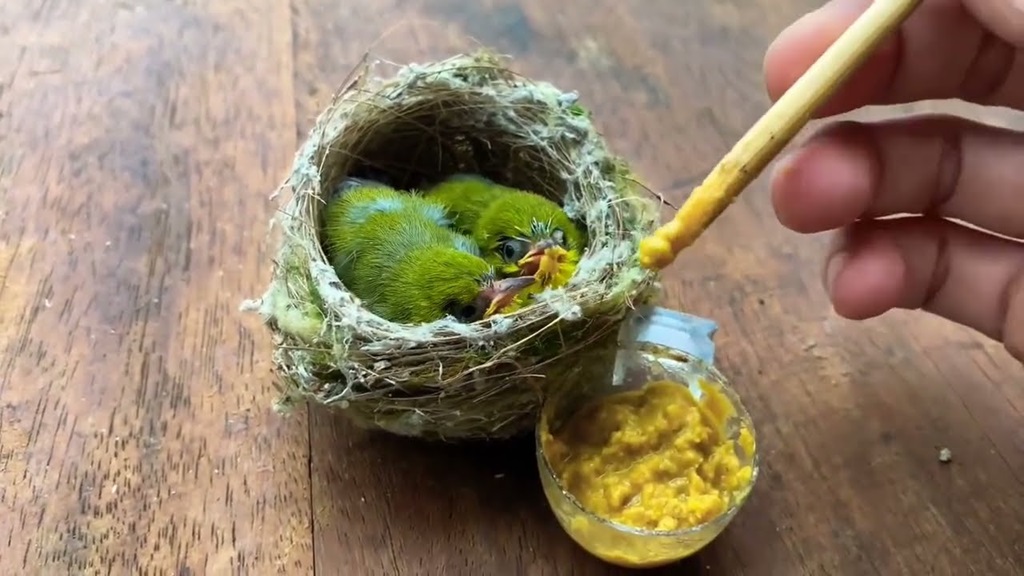
Two baby white-eyes are being fed.
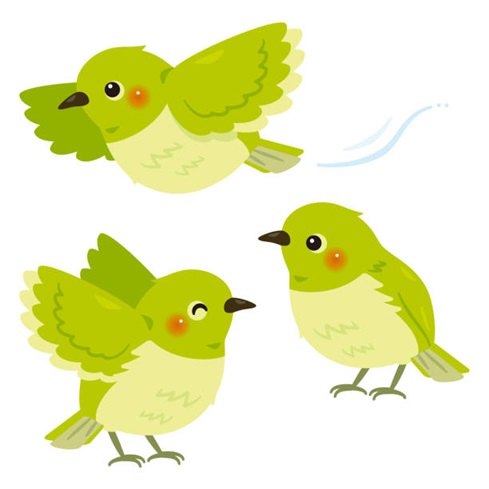
Cute cartoon white-eye bird image.
Through the above article, nicebirds.net has shared detailed information about the origin, habits and how to take care of the singing Ring-necked Bird . Hopefully, you have gained more knowledge and experience to raise this small, lovely bird. Whether you are a long-time bird player or a newbie with no experience, the Ring-necked Bird is still an ideal pet bird.
Don't forget to follow our Blog section to discover more bird raising experiences compiled from veteran "players"!

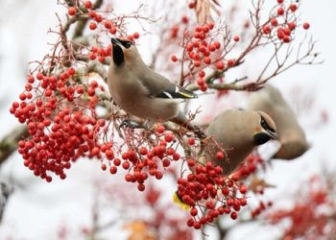

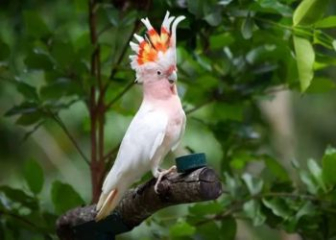

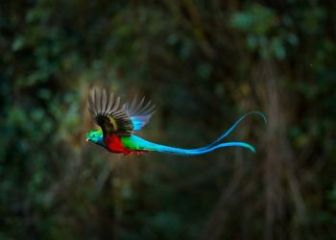





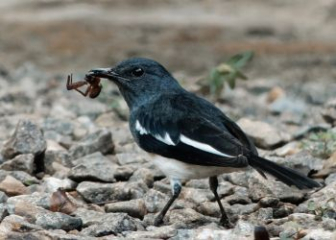
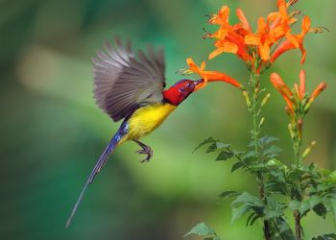


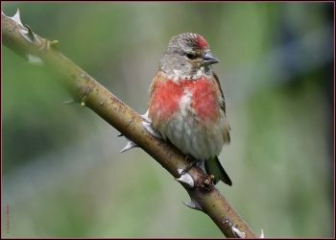
_350x250.jpg)
